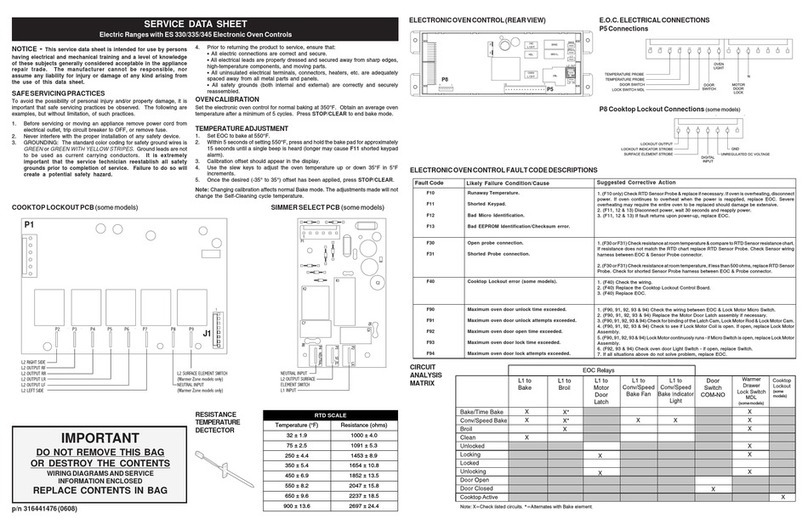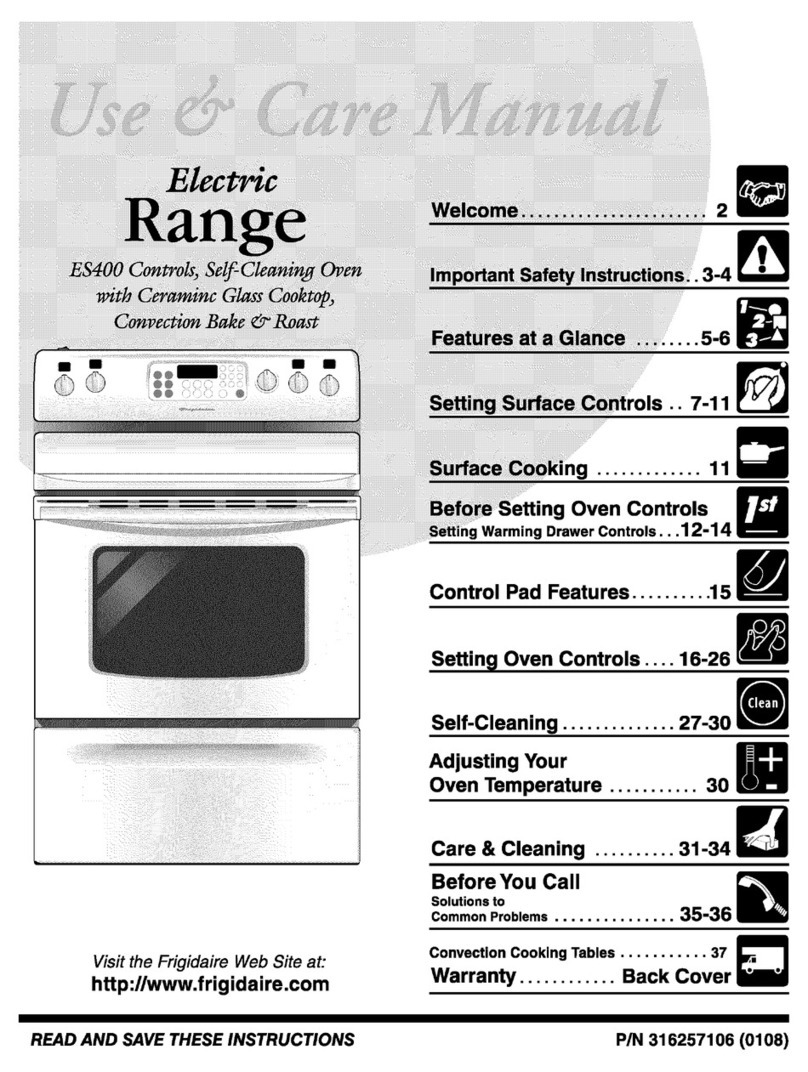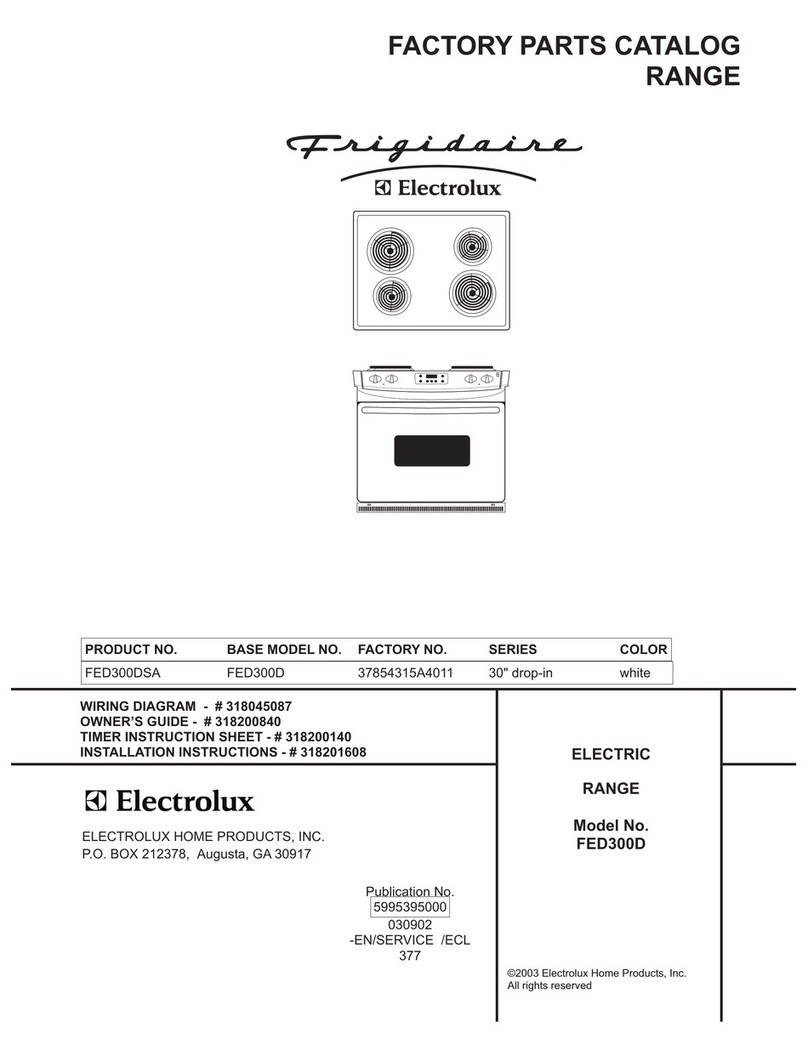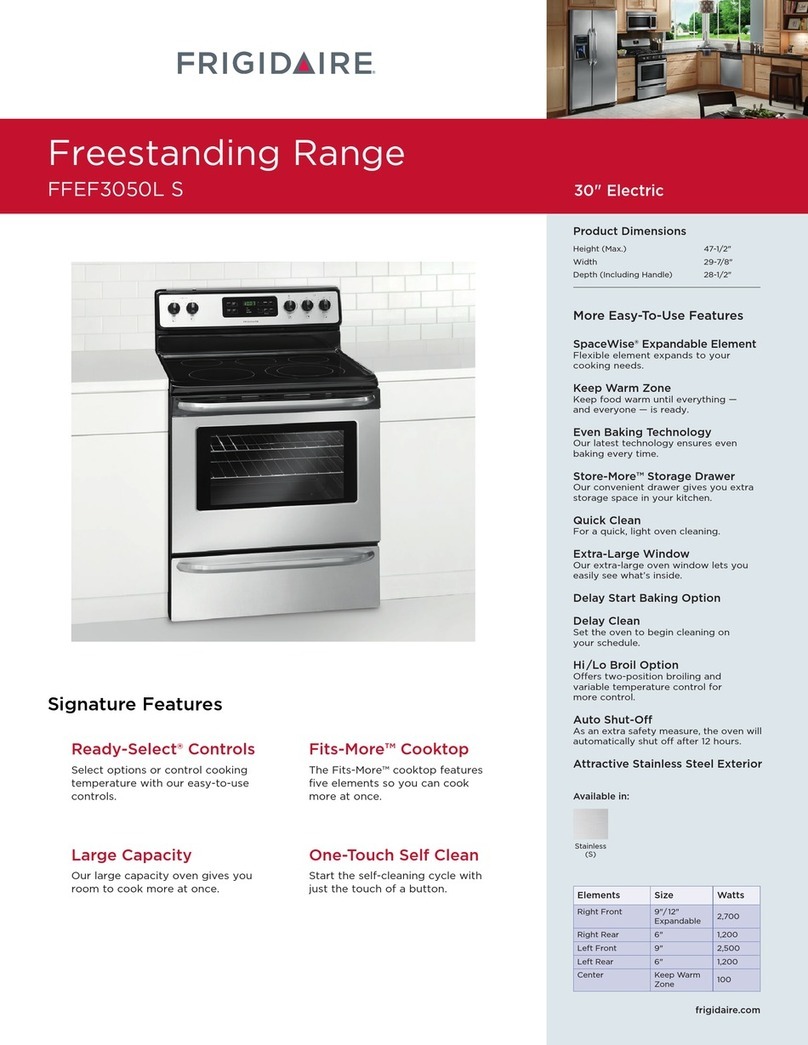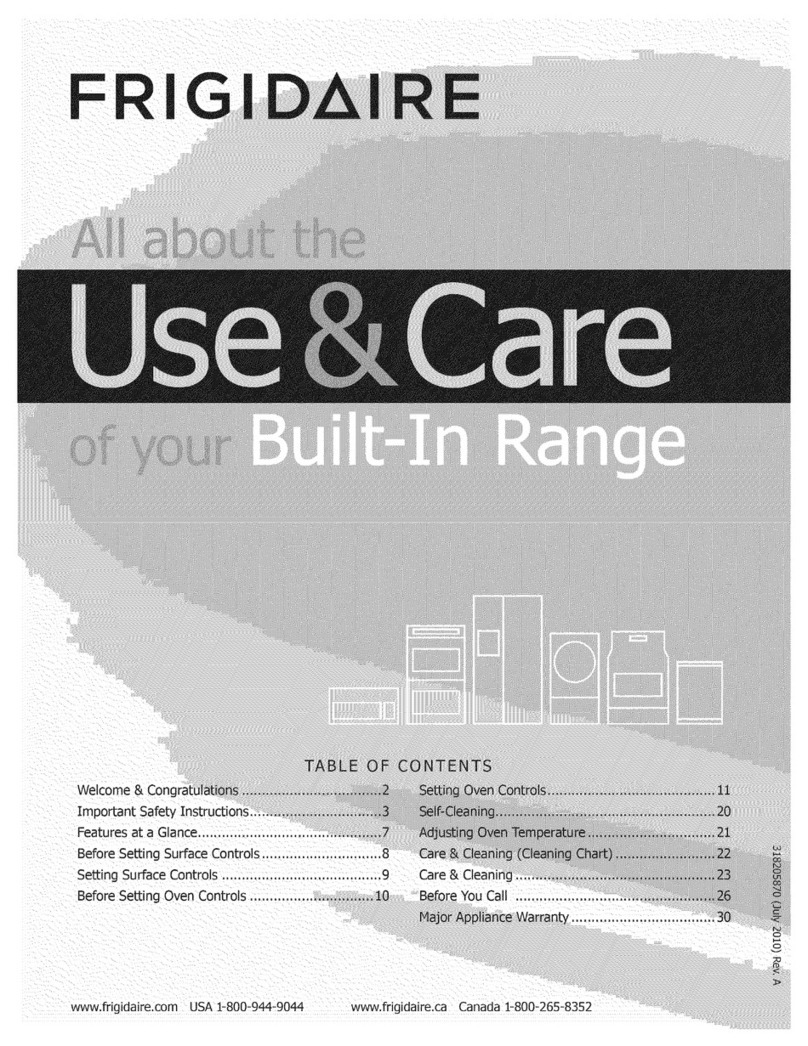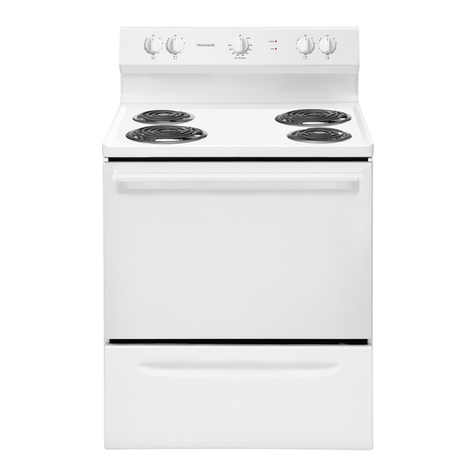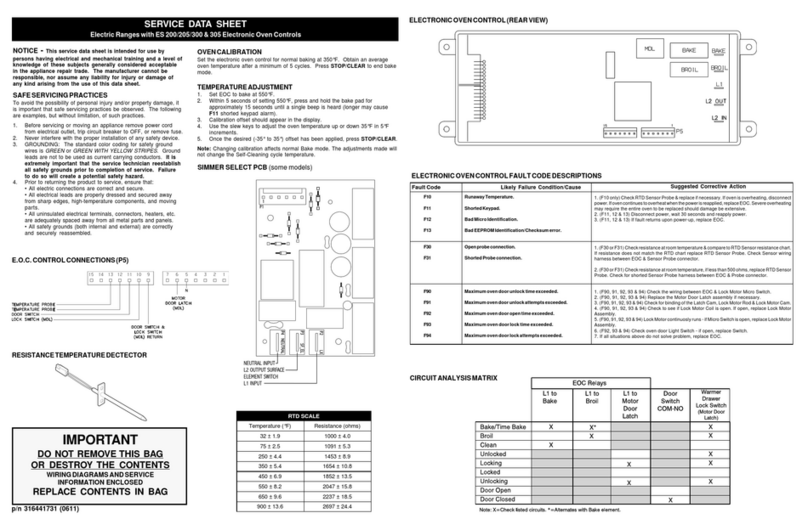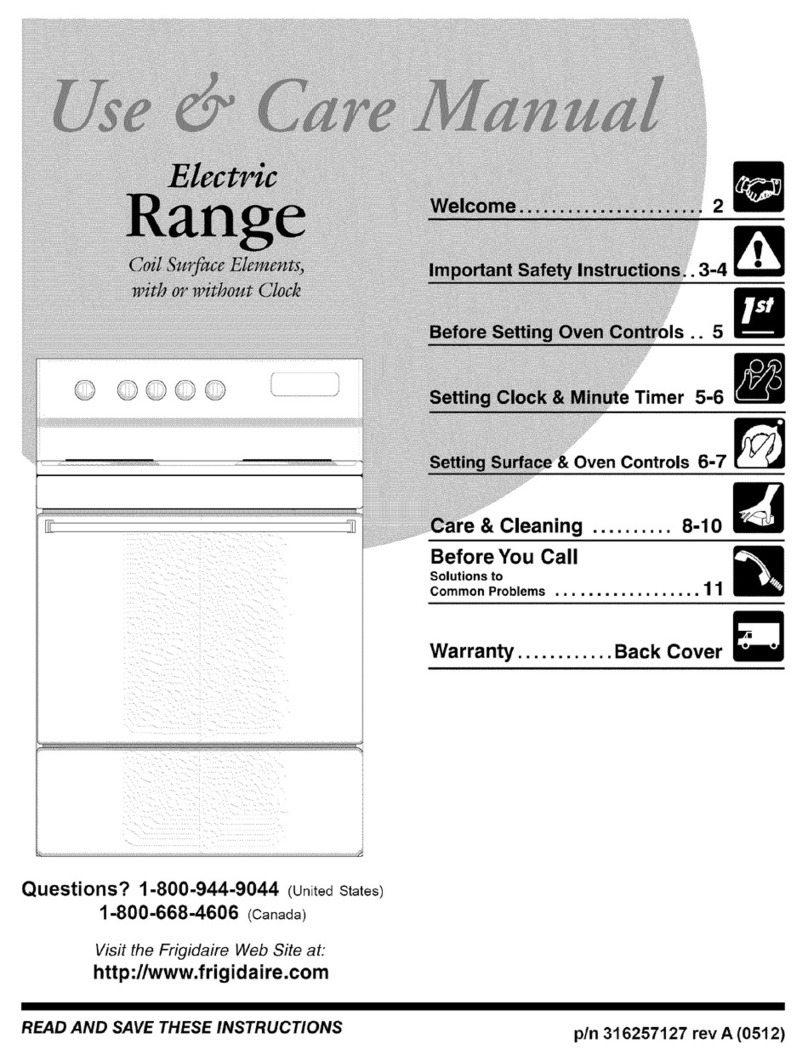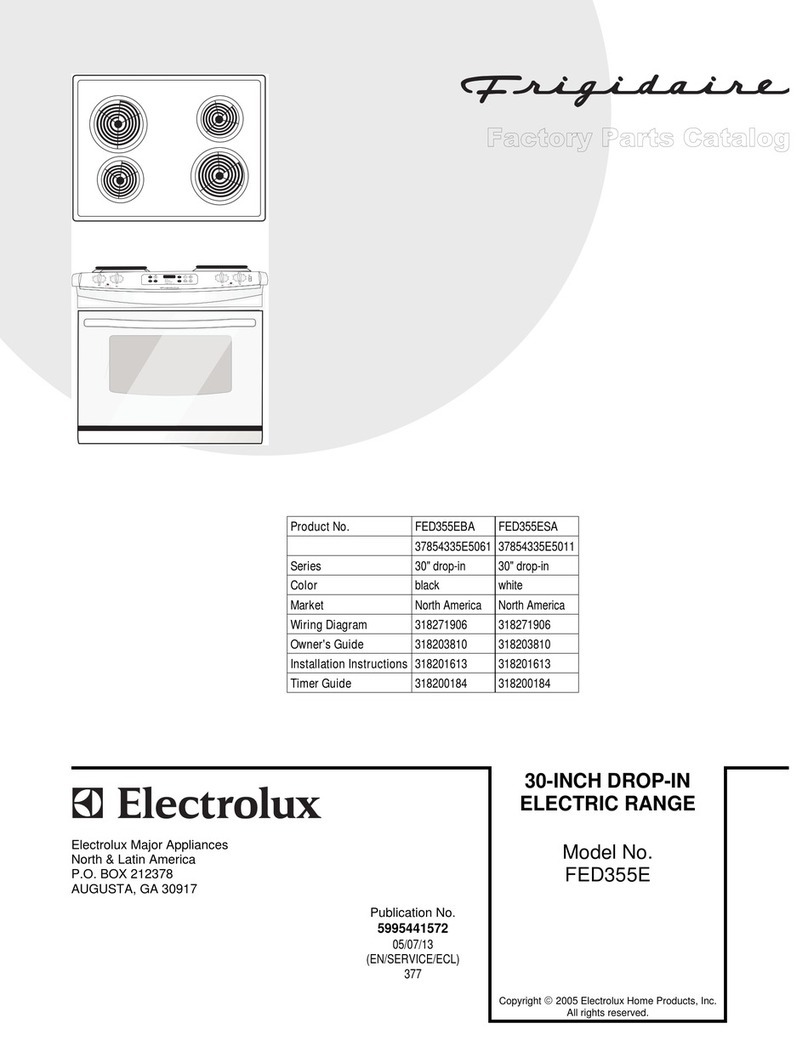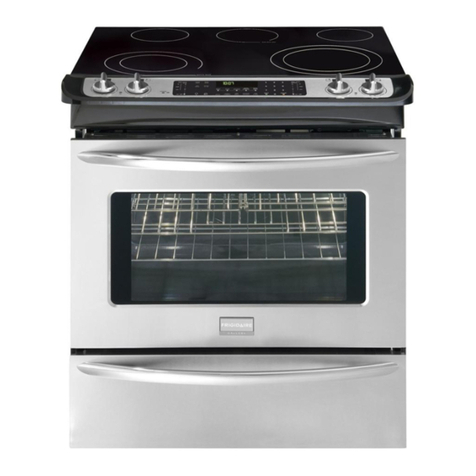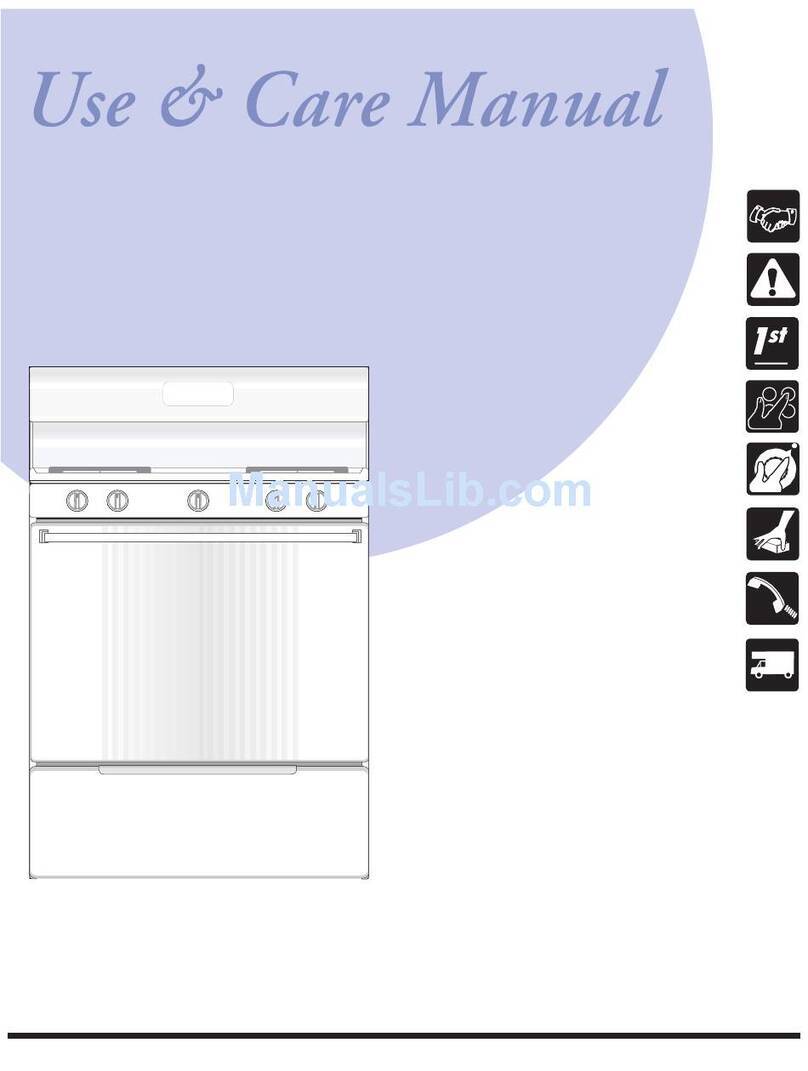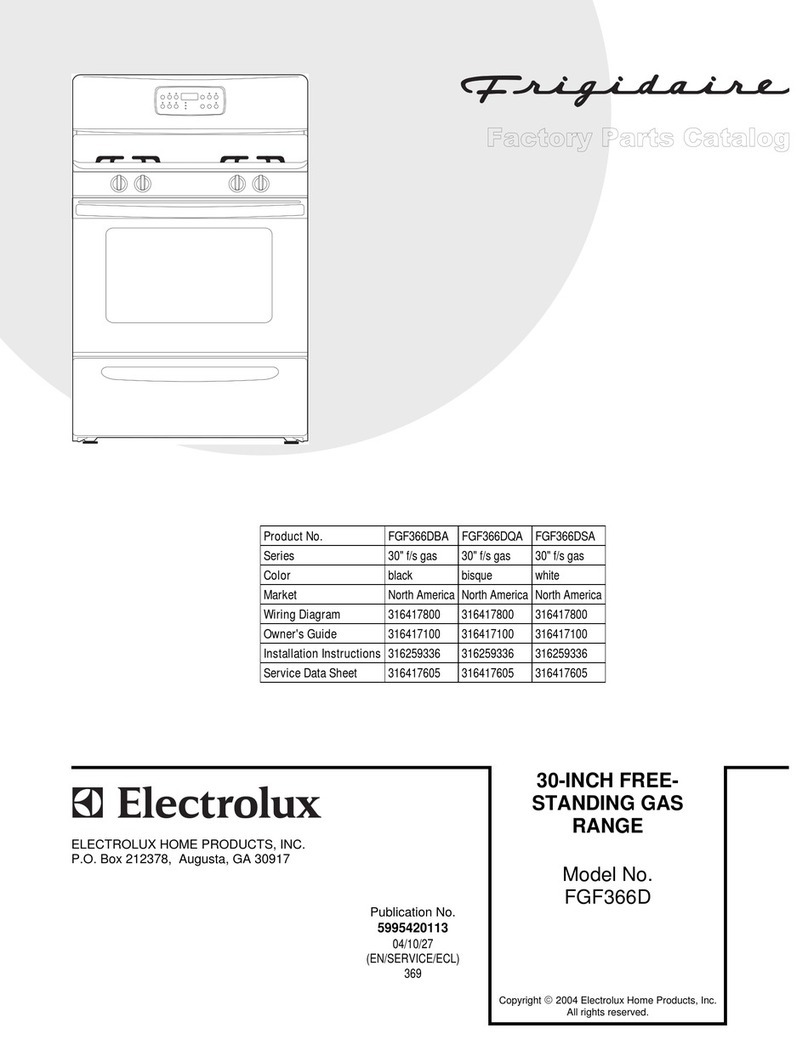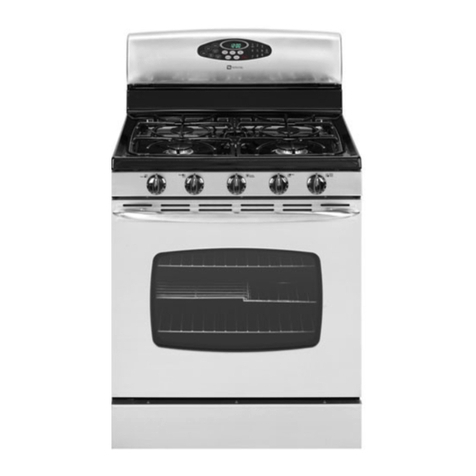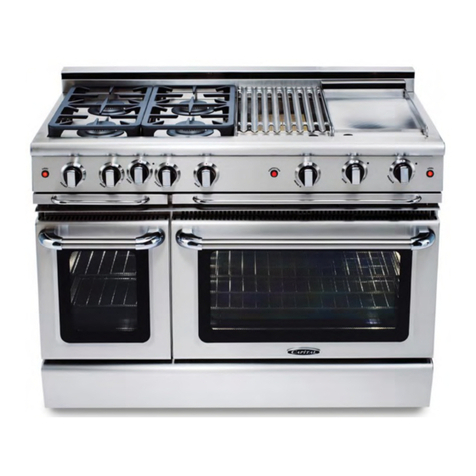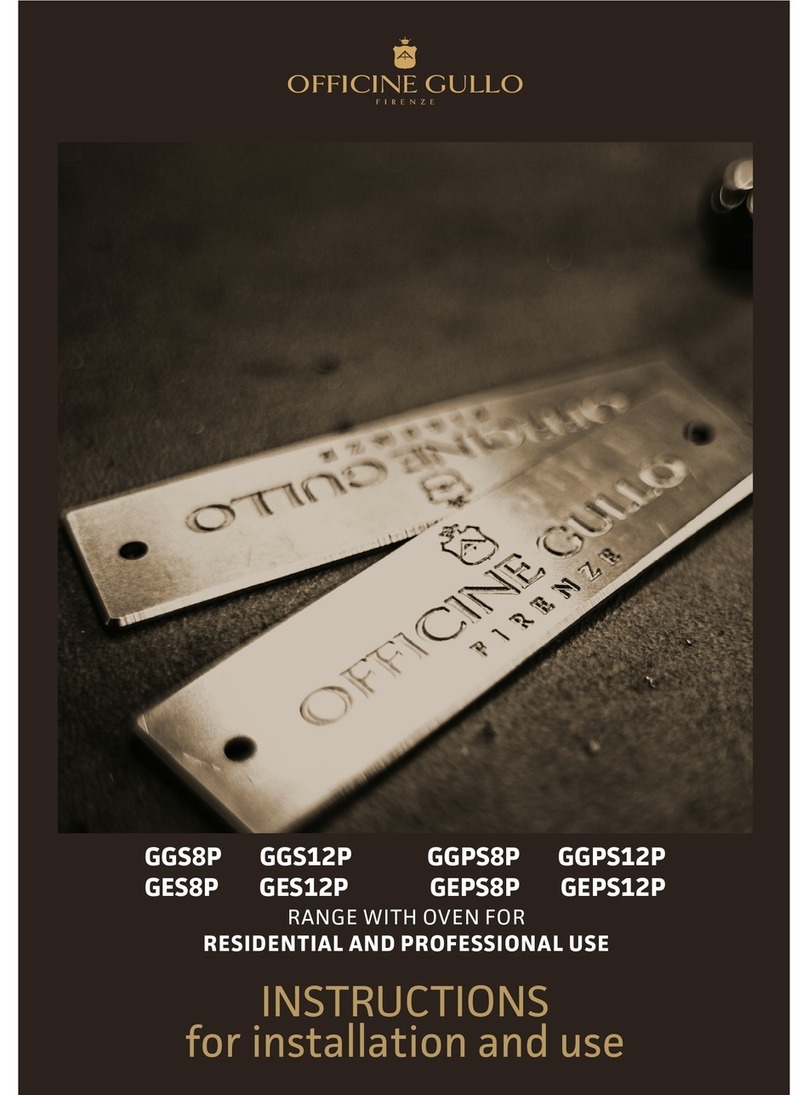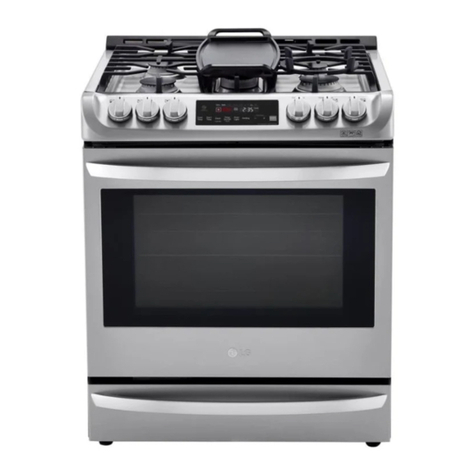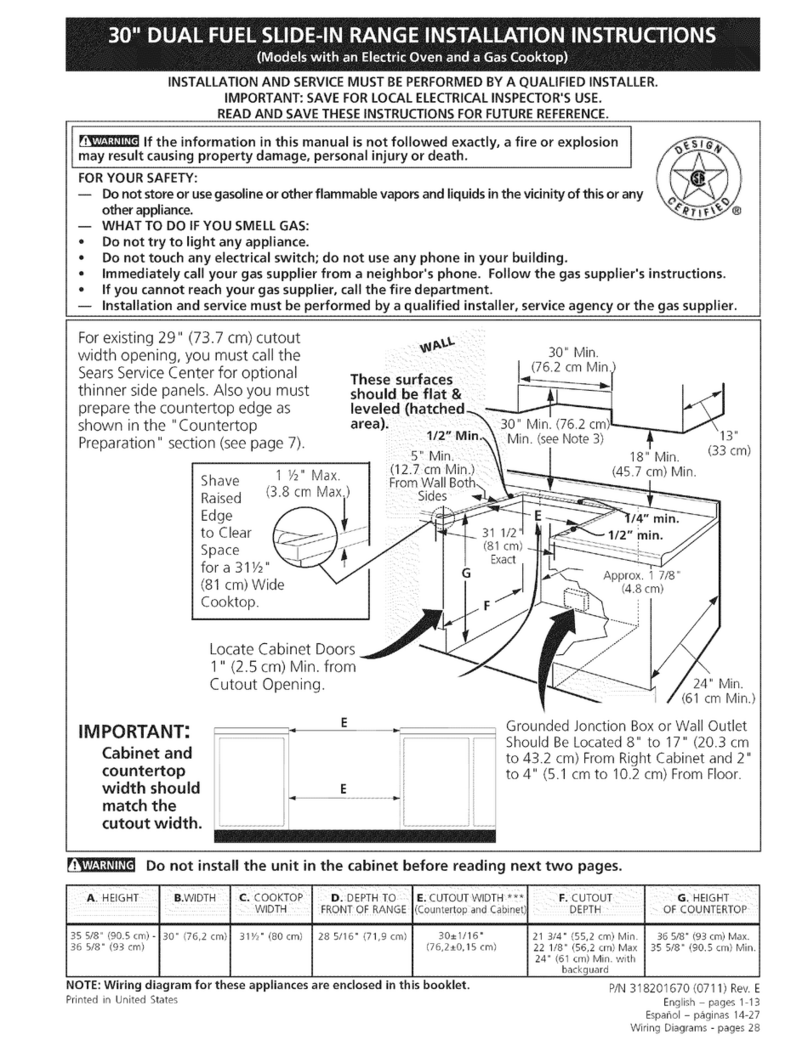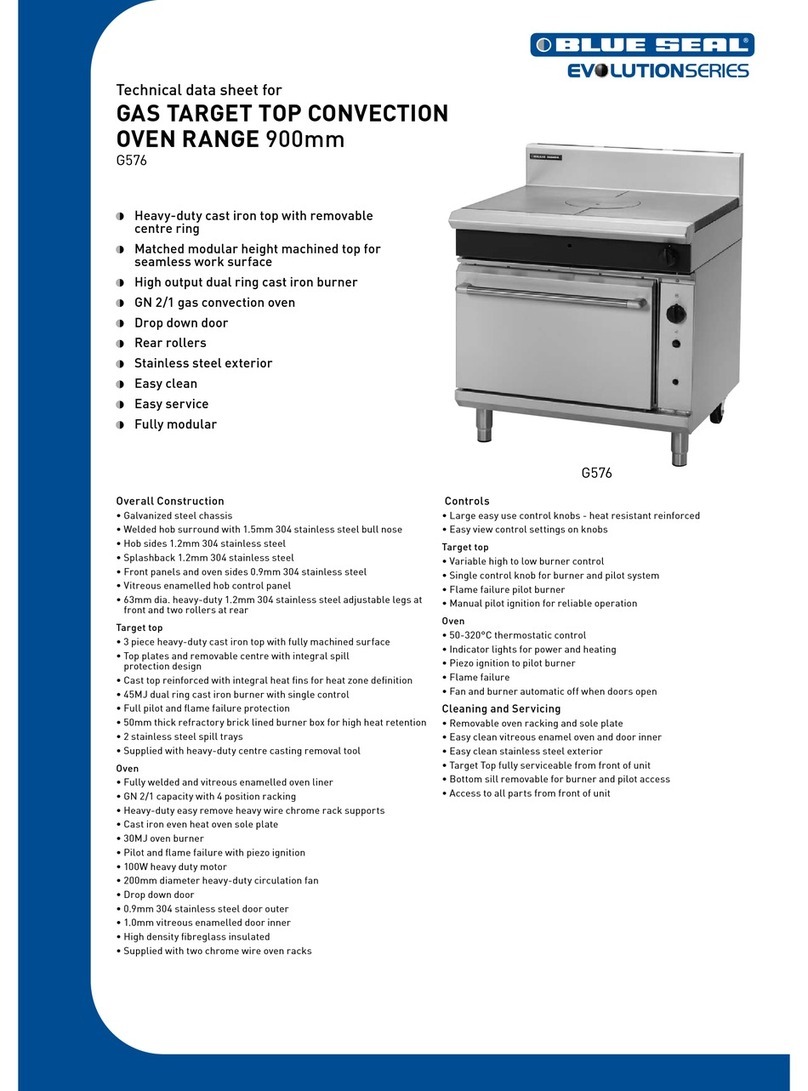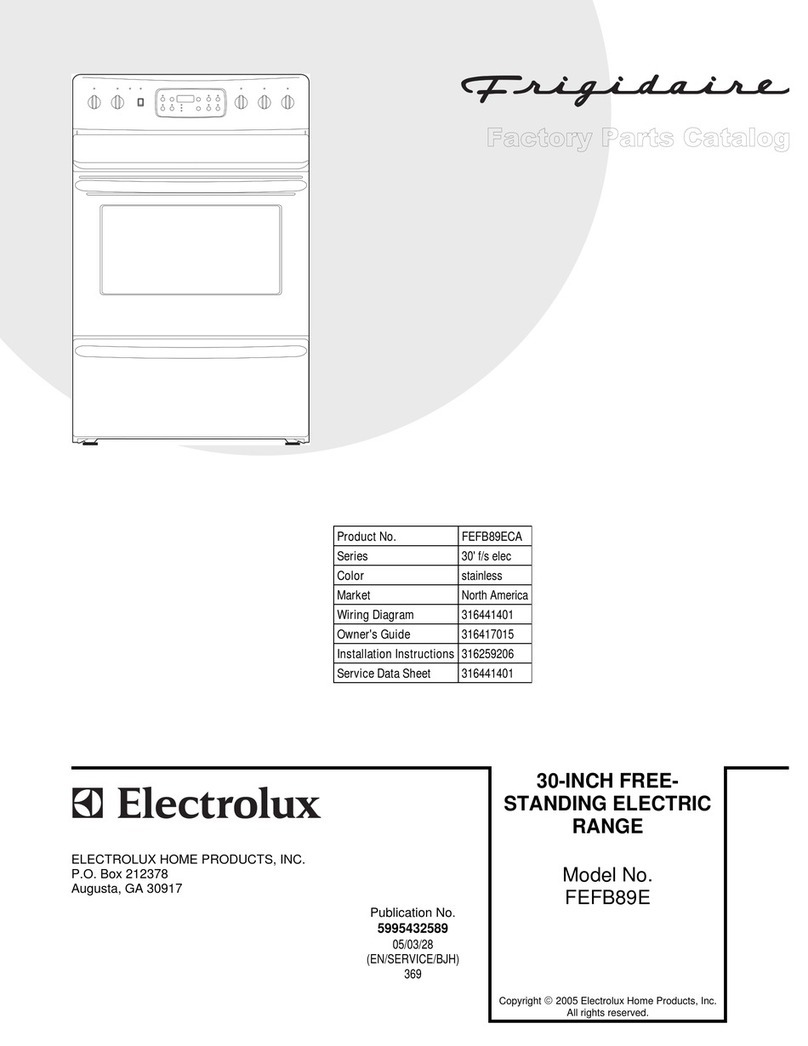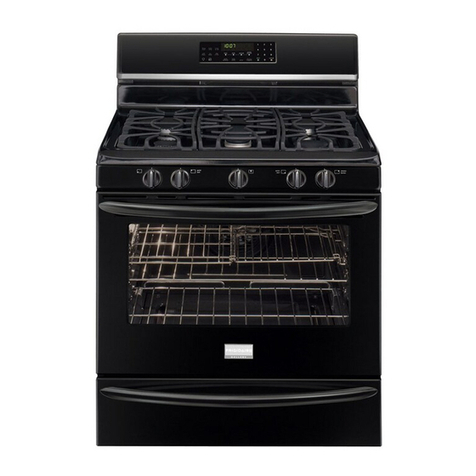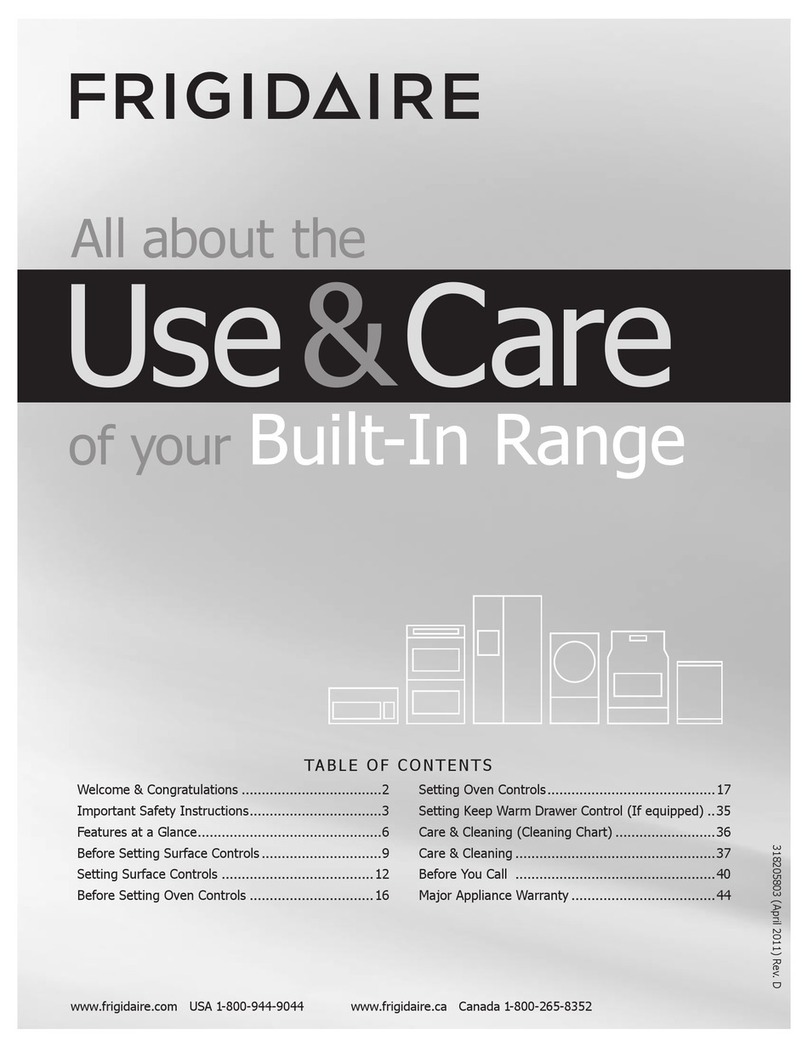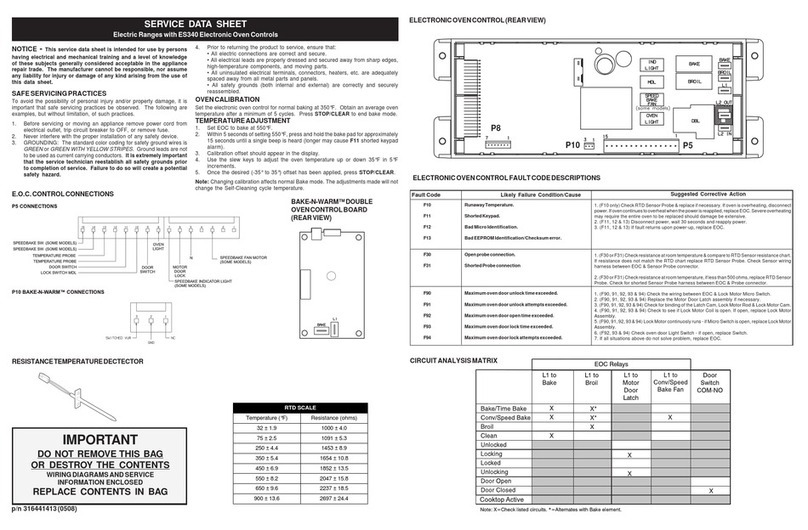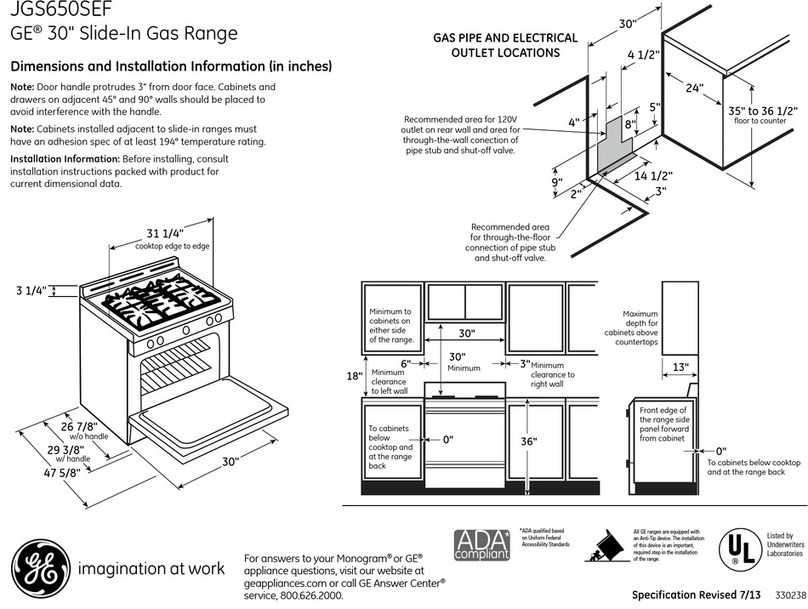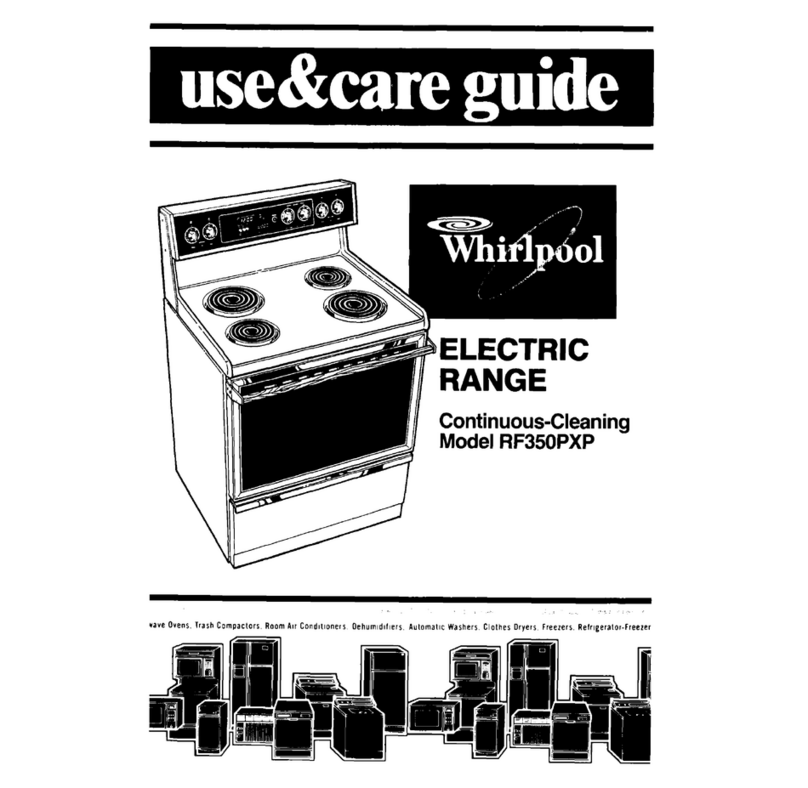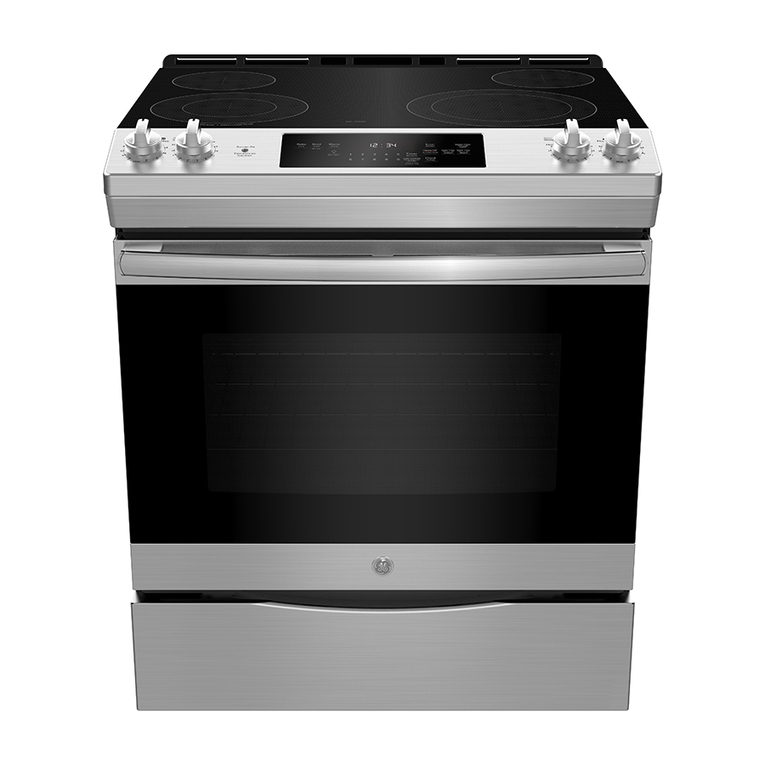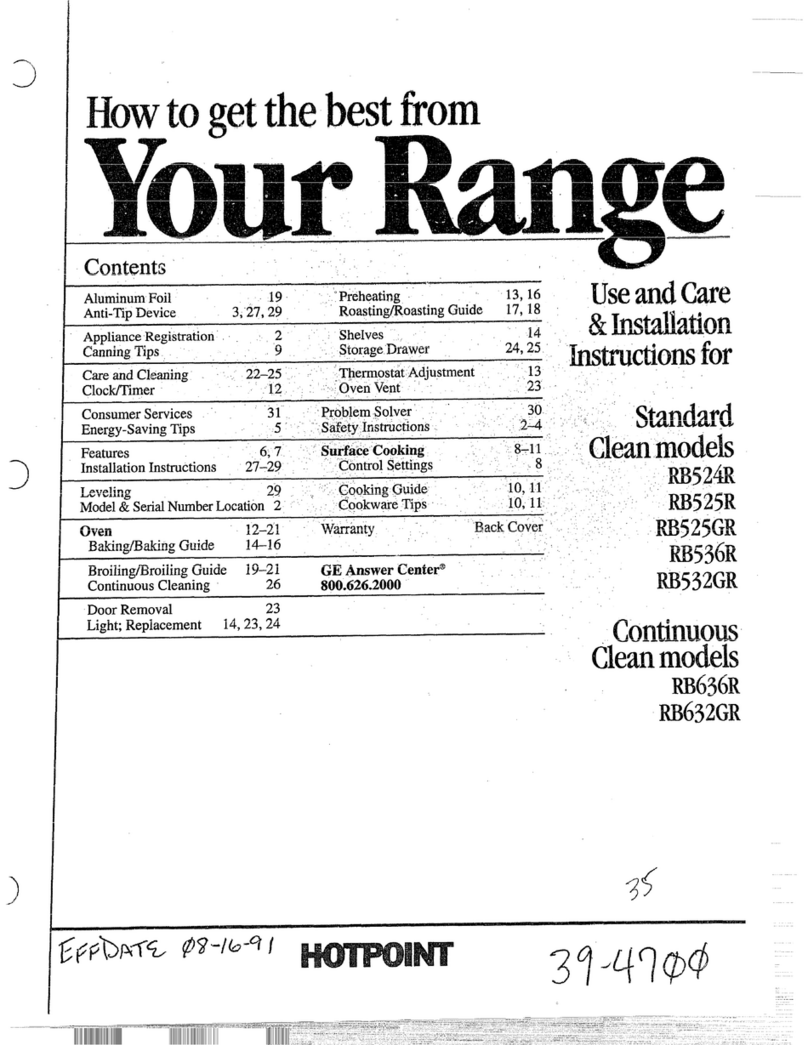Resistance
Temperature
Detector
ElectronicOvenControl(E.O.C.) Connections(J1)
p/n 316904412(0904)
NOTICE - This service data sheet is intended for use by persons
having electrical and mechanical training and a level of knowledge
of these subjects generally considered acceptable in the appliance
repair trade. The manufacturer cannot be responsible, nor assume
any liability for injury or damage of any kind arising from the use of
this data sheet.
SAFESERVICINGPRACTICES
To avoid the possibility of personal injury and/or property damage, it is
important that safe servicing practices be observed. The following are
examples, but without limitation, of such practices.
1. Before servicing or moving an appliance remove power cord from
electrical outlet, trip circuit breaker to OFF, or remove fuse.
2. Never interfere with the proper installation of any safety device.
3. GROUNDING: The standard color coding for safety ground wires is
GREEN or GREEN WITH YELLOW STRIPES. Ground leads are not
to be used as current carrying conductors. It is extremely important
that the service technician reestablish all safety grounds prior
to completion of service. Failure to do so will create a potential
safety hazard.
4. Prior to returning the product to service, ensure that:
• All electric connections are correct and secure.
• All electrical leads are properly dressed and secured away from sharp
edges, high-temperature components, and moving parts.
• All uninsulated electrical terminals, connectors, heaters, etc. are
adequately spaced away from all metal parts and panels.
• All safety grounds (both internal and external) are correctly and
securely reassembled.
Oven Calibration
Settheelectronicoven control for normal bakingat350°F. Obtainan average
oven temperature after a minimum of 5 cycles. Press CANCEL or CLEAR
to end bake mode.
Oven Temperature Adjustment
(some models - do not use Bake or Broil while adjusting the oven
temperature):
1. Press & hold the BAKE key pad and release after the display begins flashing
the factory temperature setting of 00.
Note: If the oven temperature has been previously adjusted from the factory
setting, the current temperature adjusted value will flash in the display instead.
2. You may increase the oven temperature in 5°F increments with each press of
theUP ARROW key pad to a maximumovenadjustmentof+35°F.You may also
adjust the oven temperature downward in 5°F increments with each press of
theDOWNARROWkeypad(totaladjustmentrangeof-35to+35F. Note: Your
oven control was factory set in the (Fahrenheit) °F Temperature Display Mode.
To change for (Celsius) °C, see Changing the Temperature Display Mode
in the Oven Control Functions section of this Use & Care Manual.
3. If no other key pad is pressed after 5 seconds the display will begin to flash.
4. If you do not want to keep the display adjustment, press the CANCEL or
CLEAR keypad before the oven control beeps. This will cancelthe temperature
adjustment procedure. To start this procedure over again begin with step 1
above OR;
5. If you want to keep the adjustment, wait until the display quits flashing and the
oven control beeps once.
6. The oven temperature adjustment has be accepted by the oven control and the
display will return to the time of day.
Notes:The oven temperatureadjustment may be made ifyour oven controlhas
been set to operate in the (Celsius) °C Temperature Display Mode. In this
caseeachpressoftheUPARROWorDOWNARROWkeypadwilladjustin1°C
incrementsupward(maximum+18°C)ordownward(maximum-18°C),depending
on which arrow key pad is pressed.
Resistance Temperature Detector Scale
Electronic Oven Control (E.O.C.) Fault Code Descriptions (some models-models that display F1 or F3)
Note: Onlytwo fault codes are displayed by this control - F1 or F3.Generally, F1 display implies the electronic oven controlitself has detected an internal
malfunction. F3 implies the control has detected a sensor probe failure. In either case, an alarm will accompany a displayed F1 or F3.
1. Shorted keypad.
2. Control's internal checksum may have become corrupted.
3. Control has sensed a potential runaway oven condition. Control
may have shorted relay, RTD sensor probe may have gone bad.
1. OpenRTDsensorprobe.Note:TheEOCwillinitiallydisplayanF1
forthiscondition. TheEOCthinks arunawayovencondition exists.
2. ShortedRTDsensorprobe.Note: The F3 forshortedprobeshould
only occur when the oven is active or when an attempt is made to
enter a mode.
Likely Failure Condition/Cause Suggested Corrective Action
Fault Code
1. Disconnectpower,wait 30secondsandreapply power.Iffaultreturns
upon power-up, replace EOC.
2. Check RTD sensor probe and replace if necessary. If oven is
overheating, disconnect power. If oven continues to overheat when
thepowerisreapplied,replaceEOC.Severeoverheatingmayrequire
the entire oven to be replaced, should damage be extensive.
3. Replace EOC.
1. Check resistance at room temperature and compare to RTD sensor
resistancechart.Ifresistancedoesnotmatch the chart, replace RTD
sensor probe.
2. Checkresistanceat roomtemperature,if lessthan500 ohms,replace
RTD sensor probe.
F1
F3
Runaway Temperature.
Shorted Keypad.
Bad Micro Identification.
Bad EEPROM Identification/Checksum error.
Open probe connection.
Shorted Probe connection.
Likely Failure Condition/Cause Suggested Corrective Action
Fault Code
1. (F10 only) Check RTD Sensor Probe & replace if necessary. If oven is overheating,
disconnect power. If oven continues to overheat when the power is reapplied, replace EOC.
Severe overheating may require the entire oven to be replaced should damage be extensive.
2. (F11 & 13) Disconnect power, wait 30 seconds and reapply power.
3. (F11 & 13) If fault returns upon power-up, replace EOC.
1. (F30 or F31) Check resistance at room temperature & compare to RTD Sensor resistance
chart. If resistance does not match the RTD chart replace RTD Sensor Probe. Check Sensor
wiring harness between EOC & Sensor Probe connector.
2.(F30 orF31)Checkresistanceatroomtemperature,iflessthan500 ohms,replaceRTDSensor
Probe. Check for shorted Sensor Probe harness between EOC & Probe connector.
F10
F11
F13
F30
F31
Electronic Oven Control (E.O.C.) Fault Code Descriptions (some models-models that display F10, F11, F13, F30 or F31)
CircuitAnalysisMatrix
